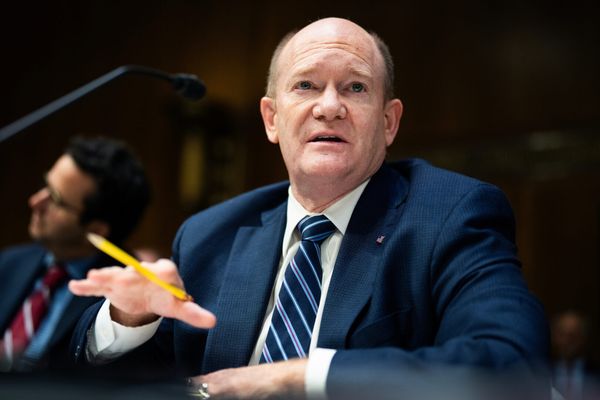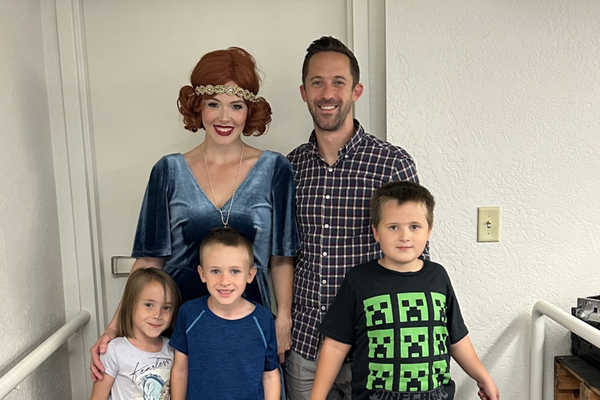+ + +
January 6, 2020
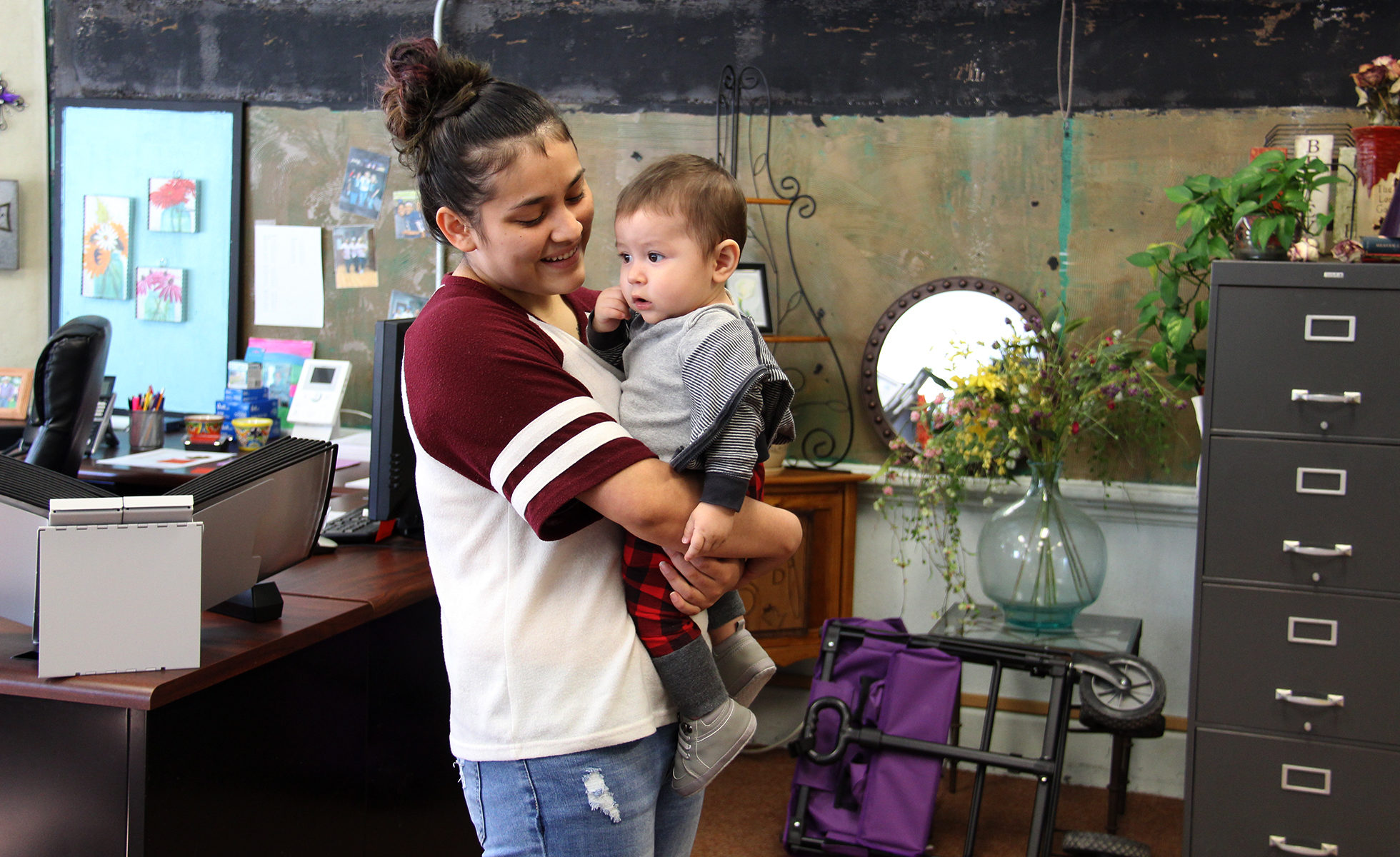
Ozona, Texas, is best characterized by its proximity to other places. The West Texas town sits almost exactly at the midway point of Interstate 10, a dangerous 2,500-mile corridor connecting Florida and California. About two hours north of the Texas-Mexico border, the unincorporated community—the only town in a county larger than the state of Delaware—appears to float in the seemingly uncharted expanse of the Texas petroleum belt, attached to nothing, disconnected from everything.
Once dubbed the “Biggest Little Town in the World” because of its quick growth and relative prosperity in the first part of the last century, Ozona, population 3,200, has been sloughing off more permanent residents than it’s gained. With few remaining storefronts on Avenue E, the main thoroughfare, Ozona is now known as a stopover for truckers, the last place to get gas for many miles. Locals usually have to leave town to get what they need—including basic reproductive health care.
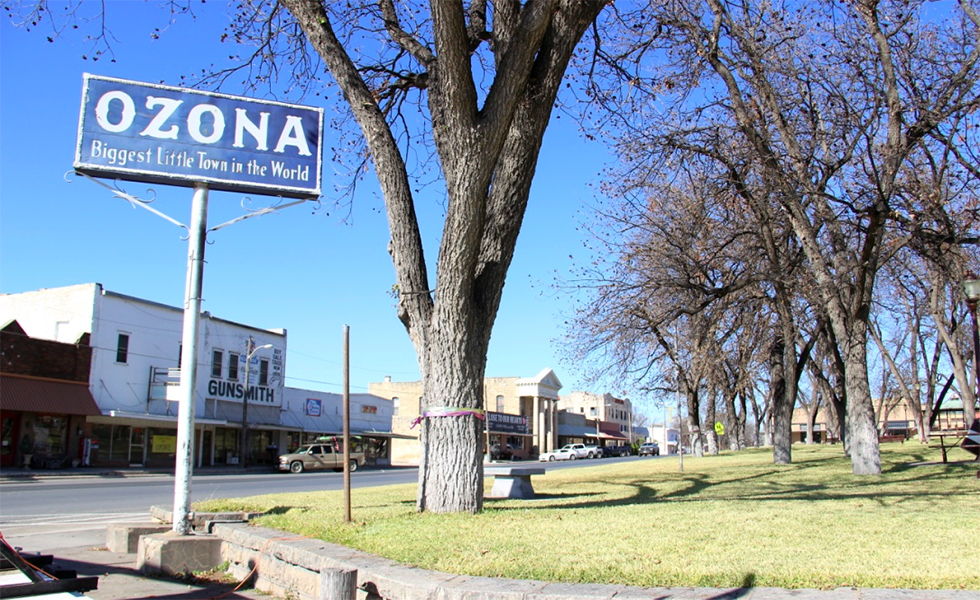
Like many other parts of rural Texas, Ozona is caught in the middle of a devastating health care crisis. More than one-fifth of Texas’ 254 counties have only one doctor or none at all. At least 20 small-town hospitals have closed since 2013. Ozona lost its hospital in 1996, leaving it to rely on a single health clinic that offers limited reproductive health services. People seeking basic preventative services or prenatal check-ups typically need to make a 170-mile round trip drive to San Angelo, a mid-sized city to the northeast. Pregnant patients have to make the same hour-long drive to give birth. The closest abortion clinic is in San Antonio, a 400-mile round trip. When it comes to reproductive health care services, the area is “a medical wasteland,” says Karen Huffman, who served as Ozona’s school nurse for 16 years until her retirement in 2017.
The reproductive health care problem in Ozona is notably pernicious, but millions of rural Texans lack access to these services. More than half of Texas counties have no OB-GYN. Of the state’s 158 remaining rural hospitals, just 66 still deliver babies, according to the Texas Organization of Rural and Community Hospitals. Dramatic budget cuts in 2011 shuttered more than 80 publicly funded family planning clinics across the state. More than half the abortion clinics closed following sweeping anti-abortion legislation passed in 2013. (The legislation was subsequently struck down by the U.S. Supreme Court in 2016, but most haven’t reopened.)
The trend is a national one too. States are passing increasingly restrictive anti-abortion laws. Trump administration restrictions on Title X, the federal family planning program for low-income patients, have followed Texas’ example of prioritizing anti-abortion providers over established reproductive health clinics—leading an estimated 900 clinics nationwide to lose federal funding in recent months. Meanwhile, mirroring Texas, half of U.S. counties have no OB-GYN. Rural hospitals across the U.S. are shuttering their maternity wards.
The people in Ozona are facing a particular strain of this crisis: the town is at the center of a swath of West Texas where people can’t obtain birth control, can’t deliver a baby, and can’t get an abortion.
+ + +
On a recent mid-October morning, La Esperanza Clinic, a federally funded women’s health clinic in San Angelo, is abuzz with activity. Receptionists direct expectant mothers to exam rooms for prenatal check-ups; in the lobby, women distract their children with toys as they wait for their names to be called. Cindy Stokes, a nurse-midwife who’s worked at the clinic for 16 years, says she treats patients “from pre-adolescent to menopause and beyond.”
The clinic serves 30 mostly rural counties, including Crockett, where Ozona is located. “People in rural areas just have to travel for health care,” Stokes says, which presents a problem for patients who can’t find a ride or pay for gas. In Ozona, about 23 percent of families live below the federal poverty level. It’s not uncommon for patients to miss a month or two of recommended prenatal care because they can’t get to appointments; Stokes says the clinic has a no-show rate of about 15 percent.
“When the services are more difficult to access, people are either going to not use them, or use them less frequently,” says Kari White, a University of Texas researcher who has tracked the impact of state reproductive health legislation since 2011. State and national policies are “chipping away at people’s access to affordable services that they need … to plan their families and plan their lives,” she tells the Observer.
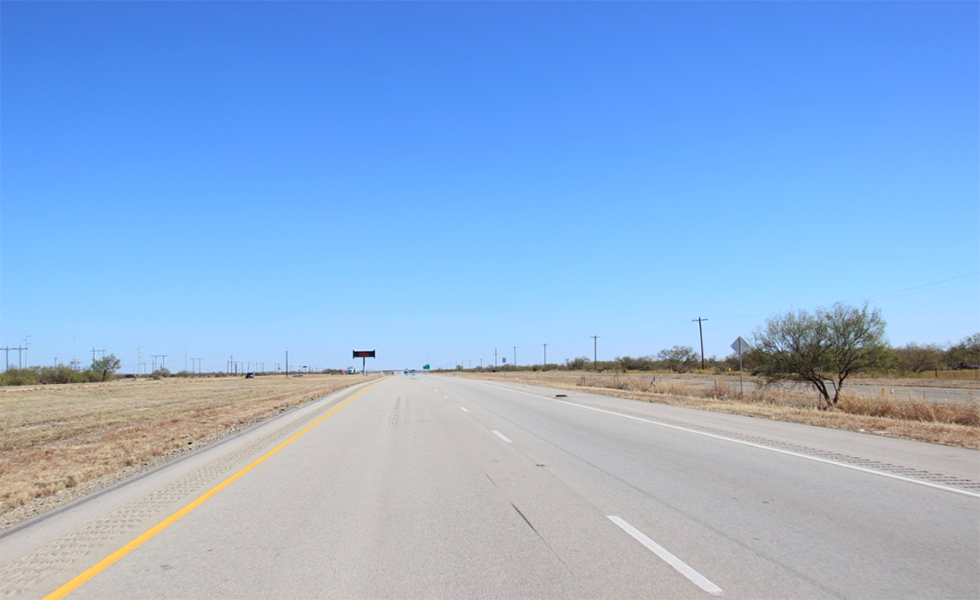
Texas lawmakers could make it easier for women to access care. Expanding Medicaid under the Affordable Care Act would extend health care coverage to 1.4 million uninsured Texans under age 65, which could dramatically improve access to reproductive services. Currently, one in four Texas women between ages 18 and 44 years old are uninsured, double the national rate. Although pregnant women are eligible for Medicaid, they’re kicked off 60 days after giving birth. According to the state’s own researchers, extending Medicaid eligibility for new moms to a year postpartum would help address high rates of maternal mortality, since most recorded deaths occur more than two months after the baby is born. But bills introduced last Legislative session to do just that failed, as did another measure to grant minors who are already mothers access to contraception without Texas’ mandated parental consent.
Reproductive rights advocates are trying to find ways to step in and expand access where possible. The nonprofit Women’s Health and Family Planning Association of Texas, which administers the multi-million dollar statewide Title X grant, has identified West Texas as an area of need and is looking into supporting providers in the region. After it was forced to close all of its West Texas clinics, Planned Parenthood reopened a facility in El Paso in 2018, and is planning to open another location in the region this year. The organization also recently launched an app so patients can obtain birth control without a doctor visit. White, the UT researcher, says that loosening tight restrictions on telemedicine for reproductive health could help expand access to services such as contraception and medication abortion.
Experts agree that expanding Medicaid under the ACA would be transformative for rural health care. The economic rut many rural hospitals find themselves in is partly due to the cost of treating uninsured patients. Uncompensated care costs for hospitals reached $6.8 billion in 2016, according to the Texas Health and Human Services Commission. Some of those hospitals, staring down grim balance sheets, have cut maternity wards in a last-ditch effort to keep from shutting down completely. That’s what happened in the Central Texas town of La Grange in 2017 and in the tiny West Texas community of Lamesa in 2018. Letha Stokes, CEO of the Lamesa hospital, called the decision to cease labor and delivery services the “most difficult thing we’ve ever had to do.”
Even before Ozona’s hospital closed in 1996, it had shuttered its maternity ward in the 1980s due to budget constraints. The town is luckier than many in that it has a clinic and a doctor, 67-year-old Marcus Sims, but he’s not an obstetrician. Even if he were, the clinic has no sonogram machine, incubator, or fetal heart monitor. If something went wrong during the delivery, the clinic wouldn’t be equipped to handle it.
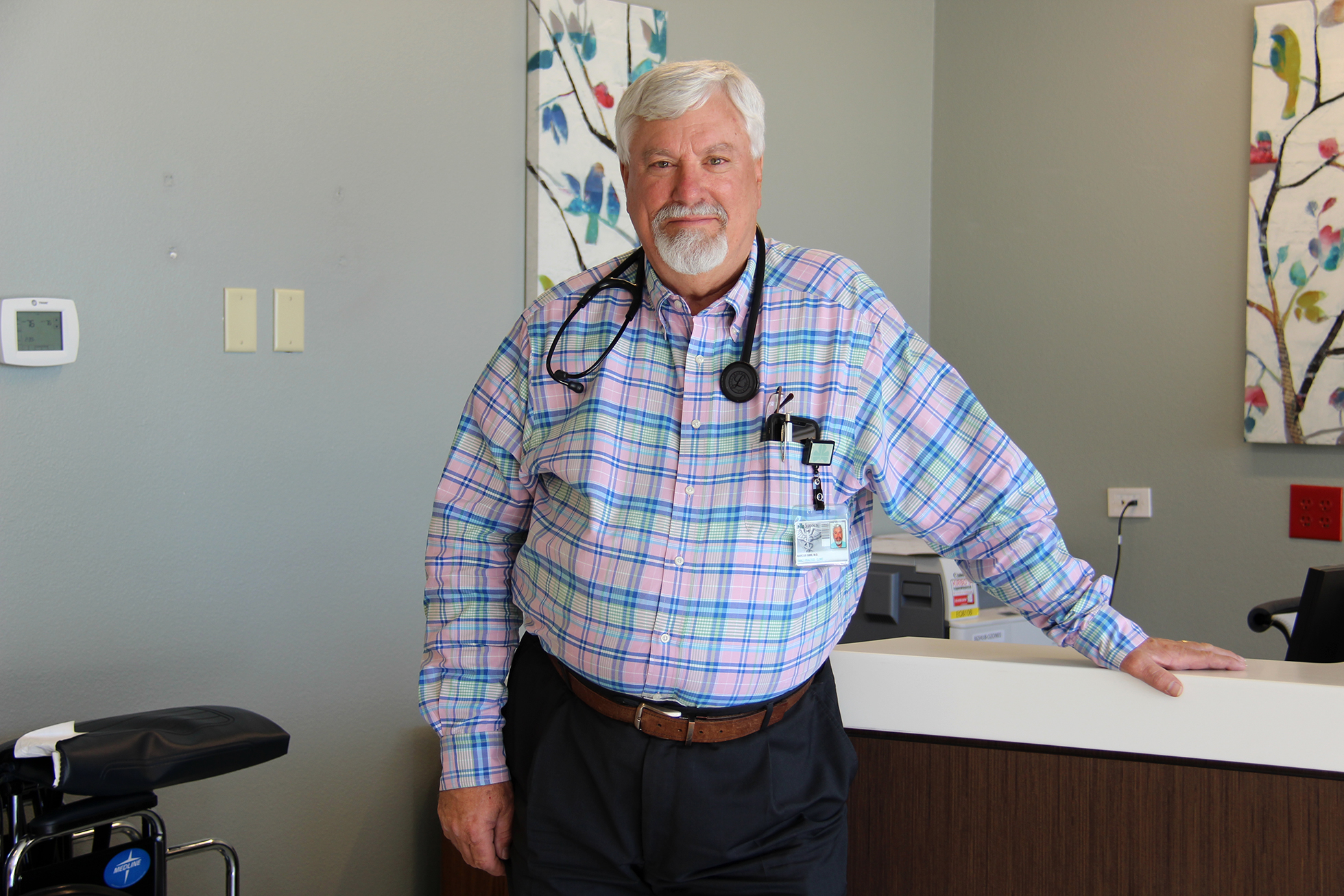
Sims says Ozona residents anticipate traveling to deliver babies, and won’t come to him in labor unless it’s an absolute emergency. What happens more often—several times a year, he says—is that someone passing through on I-10 unexpectedly goes into labor and shows up at his clinic. He recalls one incident a couple of decades ago when a woman entered the clinic and told staff she was having a baby. Sims called an ambulance and joined the patient in the back of the vehicle. “We didn’t get very far before she said, ‘I feel like I’ve got to push.’ So we just turned around and came back and delivered here instead.”
With fewer and fewer hospitals delivering babies in rural Texas, it’s becoming more dangerous to be pregnant in this part of the state. Even midwives, who historically have helped cover service gaps by doing home births, have become reticent to oversee births that have even a slim chance of becoming complicated without a hospital that delivers babies nearby.
In Sonora, 35 miles east of Ozona, Lillian M. Hudspeth Memorial Hospital once had a labor and delivery department, but it closed in 2002. “We can’t even afford the equipment, let alone the staffing it would require to take care of those patients,” says Andy Kolb, CEO of the Sutton County Hospital District. The gap in access is even more striking for women with complicated pregnancies—Kolb said that when his daughter, whose pregnancy was complicated because she previously had cancer, was about 30 weeks pregnant, she temporarily relocated to Lubbock to be close to the maternity ward there. Kolb was able to provide financial assistance to his daughter, but not everyone can afford such precautions. “I have a good job,” Kolb says. “If you don’t have a good job, you’re just crossing your fingers hoping it goes well.”
+ + +
On a May afternoon shortly before Ozona High School’s 2019 graduation ceremony, Tamara McWilliams, the school’s principal, stood facing the window in her cramped second-floor office holding a two-month-old child. McWilliams, or “Ms. Mac” as students call her, spoke on the phone as she peered out at Avenue E. Purple flags printed with a gold lion, the school mascot, hung in shop windows and on front lawns. “Every step lion pride” was written in chalk around the school campus.
Suddenly, a man applying to teach business classes at the school opened the door behind her. “Oh, I’m sorry. I didn’t know you were on the phone,” he said. His eyes widened as McWilliams turned to face him and he spotted the infant—the son of a senior girl who was down the hall taking a test. McWilliams hung up the phone and gently bounced the baby up and down, coaxing him to sleep. “It’s OK. He’s used to it,” she said. McWilliams is used to it, too. She told the potential new hire: “You know, maybe this is a good thing for you to see.”
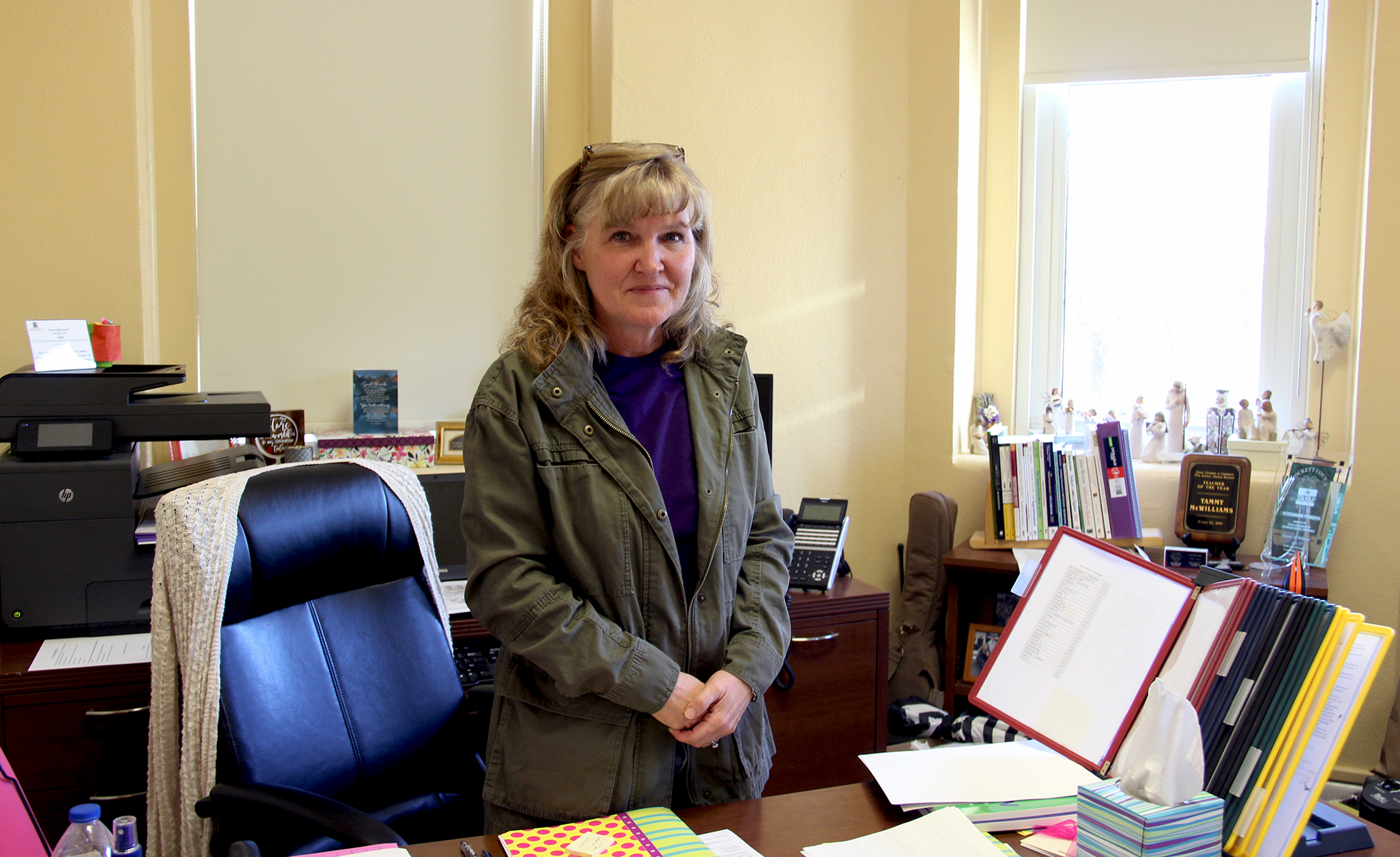
In her nearly 30 years working in the Crockett County school district, McWilliams has keyed in on teen pregnancy as one of the community’s largest obstacles. She now juggles the administrative duties of running a school and helping teens who are navigating new parenthood get their diploma. In a given school year, she estimates that 8 to 10 percent of girls in the county’s only high school are either mothers or pregnant. This past spring, about 10 of the 96 female students had or were expecting babies. Crockett County’s teen birth rate is double that of the state’s: 82 births per 1,000 females ages 15-19, compared to 41 in Texas and 17.4 nationwide. The county’s sky-high teen birth rate can be attributed at least in part to a higher-than-average poverty level, sex education that favors abstinence over safe sex, and limited access to birth control.
McWilliams has witnessed plenty of her students and staff struggle to access reproductive health care. But she’s determined not to let this interfere with her goal of a 100 percent graduation rate. “If they are here and they are enrolled, we are going to do everything humanly possible to make it happen,” she says. “We don’t have the resources that other people do, so we have to make the best of what we can do.”
Xavier, the infant McWilliams was holding, was born on March 6 to Sabrina Salas, who was an 18-year-old senior at the time. Salas, who played basketball her freshman year, had mostly stopped going to classes by the time she was a sophomore. “I thought money was more important than an education,” she says. Salas started working at 14: waiting tables, working at the local Dairy Queen, cleaning hotel rooms at the Hampton Inn just off I-10 where her mother also works. When Salas got pregnant, she decided she had to graduate, combining three years of schoolwork into one to make up for the lost time.
The challenges started before Xavier’s arrival. Salas had to figure out how to get to monthly prenatal appointments in San Angelo that became more frequent as her pregnancy progressed. Without a car, and with her mom doing another stint in the county jail, Salas had to miss school and get rides from her grandmother.
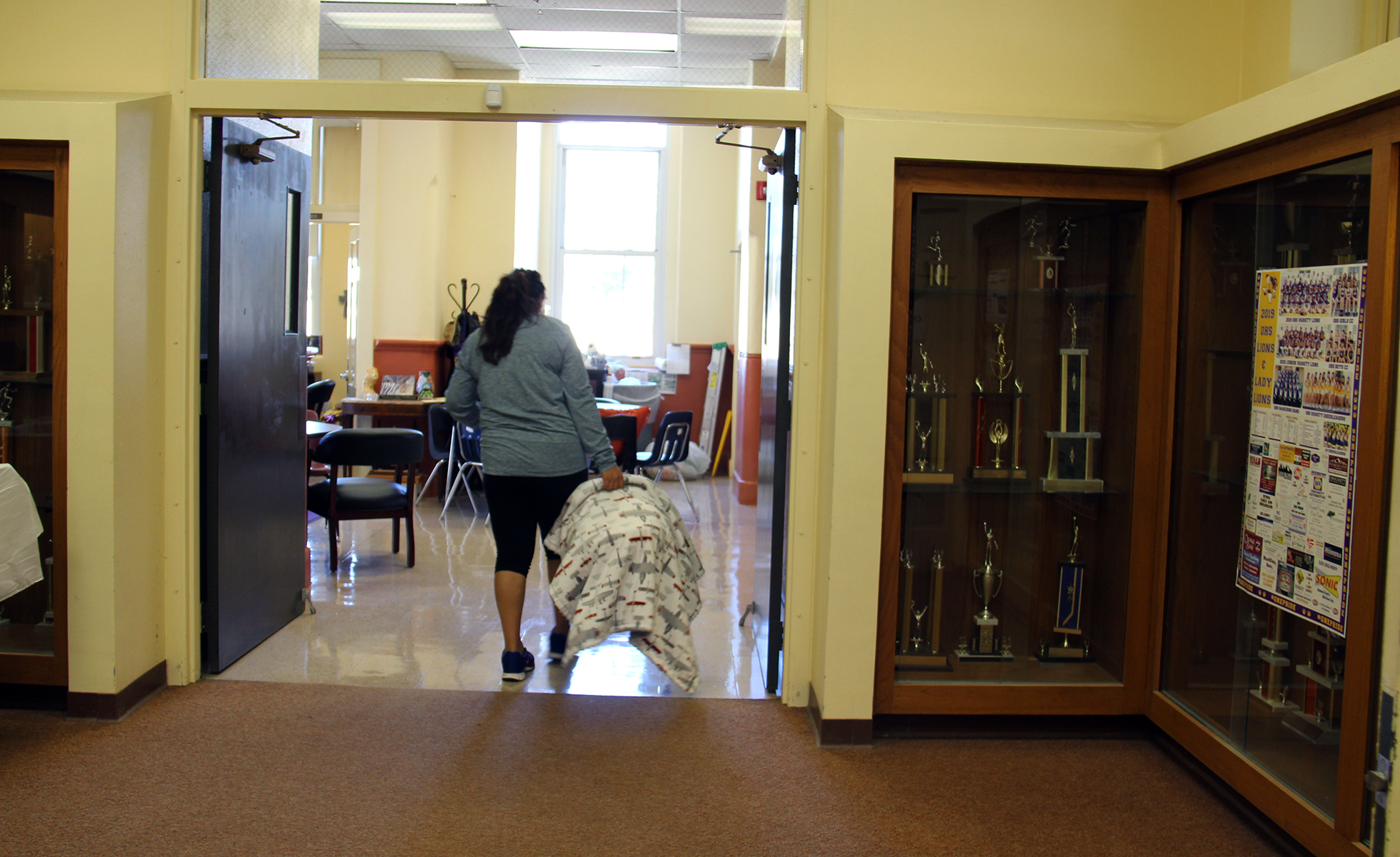
For a few weeks after Xavier was born, Salas was able to complete her schoolwork from home, with regular visits from a teacher through the school’s “homebound” program for new moms. But when it came time to rejoin her classmates at school, Salas couldn’t find anyone to take care of Xavier. “It was kind of like, what are we gonna do?” she says. If Salas had to miss more school, she wouldn’t graduate.
McWilliams had an idea. She borrowed a playpen from an elementary school teacher who recently had kids and set it up just outside her own office. For the first couple months of his life, Xavier spent most days at the high school, napping in the playpen and being passed between students and staff. Meanwhile, Salas did schoolwork at a table outside McWilliams’ office. She was frequently joined by another senior with a toddler in tow. During exams, McWilliams whisked Xavier inside her office, away from the bustle of the high school hallways, until Salas returned. She tells students all the time that her first job is to keep everyone safe. “That means the baby too.”
McWilliams, who has two sons of her own, knows that being pregnant in Ozona is difficult for anyone—she traveled to San Angelo for prenatal visits and to deliver her first child, and all the way to San Antonio for her second. But she knows it’s much harder for many of her students. Teenagers often rely on family members for transportation, who in turn have to miss work to take them. McWilliams has seen kids pulled out of elementary school for the day when their older siblings had doctor appointments in San Angelo, because the family didn’t have anyone else to pick them up at the end of the school day.
So she helps when she can: When families struggle to pay for gas to San Angelo for a prenatal appointment, McWilliams sometimes meets them at the local Stripes station to fill their tank. She has accompanied nervous teens to tell their parents that they’re pregnant. She’s talked to students about their miscarriages. When one baby died shortly after birth, McWilliams, at the student’s request, told her classmates what happened, since she wasn’t ready to talk about it herself.
McWilliams and Karen Huffman, the former school nurse, have grand retirement plans: They want to start a program to “advocate for women’s health care,” educate residents on what’s available to them and where they can go for services, and organize rides to get to appointments.
In the meantime, McWilliams wants to inspire students to have other goals. Whenever she walks a student to lunchtime detention across campus the first thing McWilliams asks when they step outside is: “What do you want to be after you get out of high school?”
“If you don’t ever say it, you’re never gonna get there, so let’s say it,” she says on a recent fall afternoon in her office. “I think that’s the hardest part of living in a rural community, with a high level of poverty—they’re afraid to say it, ‘cause they just don’t think it’s gonna happen.” She adds: “I think if we show that they’re not limited, that actually their choices are unlimited, perhaps that would give them a reason to make different choices along the way.”
Sabrina Salas says she never considered going to college, especially after she found out she was pregnant. Since she graduated in May, she’s been cleaning hotel rooms at the Hampton Inn, taking Xavier, now seven months, with her to work each day. But she decided recently that she wants a change. She’s planning to start community college in San Angelo in February. She wants to become an ultrasound technician.
Pictured above: Sabrina Salas and her baby, Xavier, at Ozona High School.

